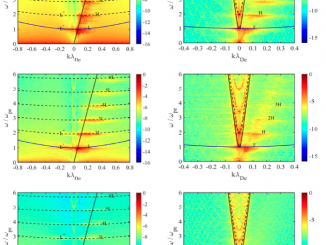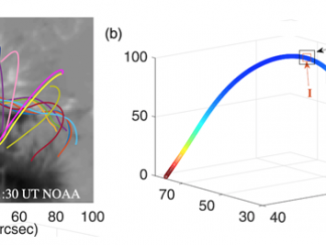Particle-in-cell simulation of plasma emission in solar radio bursts
by T. M. Li et al.
Solar radio radiation is one of the most sensitive emissions during solar eruptions, where type III radio bursts can provide clues for electron acceleration and propagation. Type III radio bursts are widely accepted to result from the plasma emission, which is observationally supported by the presence of Langmuir waves, and excited electromagnetic waves at fundamental and harmonic frequencies from the nonlinear wave coupling (Ginzburg & Zhelezniakov 1958). Such a mechanism […]




